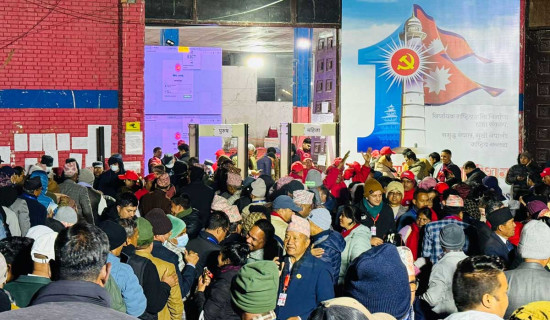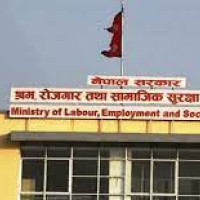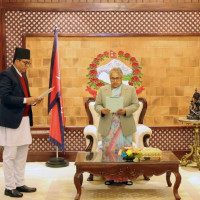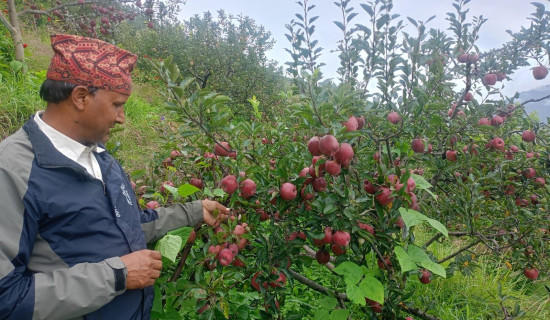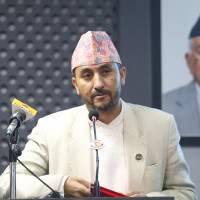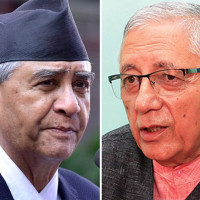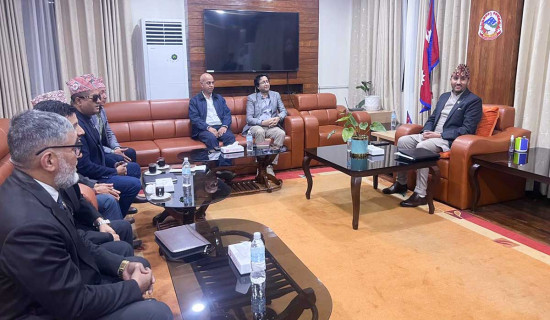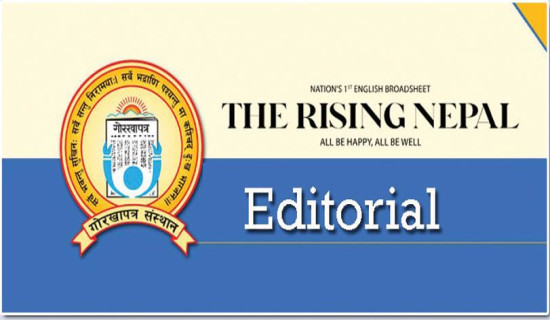- Wednesday, 17 December 2025
Tap Water Resources For Prosperity
Recently, India has grappled with a hard choice between cheap Russian oil and high US tariffs on its exports. Perhaps, considering the margin of benefit from the cheap oil price for a large number of consumers, India decided to withstand the high tariff rate of the United States. The personal rapport between Prime Minister Narendra Modi and President Donald Trump did not work in this difficult international geopolitical game. The high tariff rate is likely to hurt Indian exports to the US. How it will impact the Indian economy is yet to be seen.
It is an undeniable fact that the energy consumption of India will increase more, as it moves towards economic progress to become a developed country by 2047. Hence, the quest for an affordable energy source will be a continuous process for India. At this point, perhaps, India is not giving enough thought to tapping alternative energy sources such as hydropower that are available in its neighbourhood. Himalayan resources are largely untapped. It is also necessary to protect the Himalaya from melting down, save the Ganga basin from desertification and get people out of poverty.
Electricity
The four rivers - Koshi, Gandaki, Karnali and Mahakali - can generate over 30,000 megawatts of electricity. Besides, they can also produce a sizable amount of controlled irrigation/ drinking water and prevent recurring damage from flood disasters in the Ganga Basin. Four projects, namely Koshi High Dam, Budi Gandaki, Karnali Chishapani and Mahakali Pancheshwar, have been shelved for decades. Interestingly, over 500 engineers trained in Roorkee for Karnali Chishapani have retired, and some even died, while the project is standstill. The opportunity losses from these projects are mindboggling.
What are the underlined causes of not starting these prominent projects? One of the main reasons is the existing project development mindset of India. Full control of the Government of India and cheap prices of products are the hallmark of project development.
Out of four projects developed by India, Koshi Barrage, Gandak and Mahakali Tanakpur are located in the Nepal-India border, giving full monopoly control to India, while the Arun III, which was dropped for grave environmental concerns, was signed during the SAARC Summit in 2014 in Kathmandu, and it is now under construction. These projects were built with a very narrow scope and low factor prices. Hence, they could not propel multiplier economic development in the hinterlands, let alone generate resources for sustainable development in the fragile Himalayan region. These projects have generated more resentment in Nepal than visible development around the project areas and beyond.
For developing large-scale hydropower projects, a huge amount of resources is required. The government alone cannot generate the required resources. Besides, the water resources projects have three components – technical (engineering), livelihood development (including rehabilitation) and environmental augmentation. When these components are not embedded while designing the projects, no business opportunities will be generated at the local level.
Hence, in order to generate broad-based development from water resources projects, the private entrepreneurs should also be engaged along with the governments in livelihood development and environmental augmentation. Such a method would allow efficient utilisation of resources, innovation of new products, and sustainable development in their hinterland. What could be the policy incentives that the government can provide for appealing to the private sector? The first one is the opening of market access in India with a competitive price.
Due to the artificially low factor prices of Nepali products and restrictions, in one way or the other, in the Indian market, the earlier projects could not generate a multiplier economic impact in the surrounding areas. Therefore, big business firms of Nepal and India could not find it economically beneficial to invest in agro-based industries in Nepal. This reality needs to be brought to the notice of the policy makers of Nepal and India.
Water resources projects generate multiple products such as fresh water, renewable energy, agro-based products, etc., and the competitive pricing policies and free access in the Indian market will give the biggest policy incentive to attract private sector involvement. Similarly, when the farmers get higher prices for their products, they will come back into the farming occupation, and sustainable development and greenery in the hills and mountains will flourish.
The second one is the compensation package for those who would be affected by the project. The reservoir of such large projects will inundate a vast amount of land, which consists mostly of the fertile riverbed of mountain rivers. These lowlands are the food basket of the hills and mountain communities. In many areas, urban infrastructures have also been developed. Monetising all structures in the current market price for one-time compensation will not be feasible. Considering that the whole Ganga Basin of UP, Bihar and West Bengal would benefit from irrigation, water supply and flood control, an attractive trade-off for developing the compensation package can be considered.
Financial package
Hence, a package combining a one-time financial package as well as equity shares of the project, which will generate annual income when the projects start generating revenue, can be designed. Such packages may be acceptable to the people. Since there is an open border regime between Nepal and India and Indian currency is acceptable in Nepal, developing such large-scale projects is possible. A framework agreement for investment in Nepal and opening the market in India for Nepali products could be developed in order to formalise these arrangements.
Exploiting the Himalayan water resources for the development of the entire Ganga Basin would be a game-changer project. However, due to the lack of a broad vision and an appropriate implementation strategy, it remained underutilised. If the public-private partnership (PPP) model could be utilised for developing Koshi High Dam, Budi Gandaki, Karnali Chisapani, Mahakali Pancheshwar, they can prevent the Himalaya from melting down and change the economic landscape of the entire Ganga Basin.
(The author is a former Director General of the Centre on Integrated Rural Development for Asia and the Pacific.)



